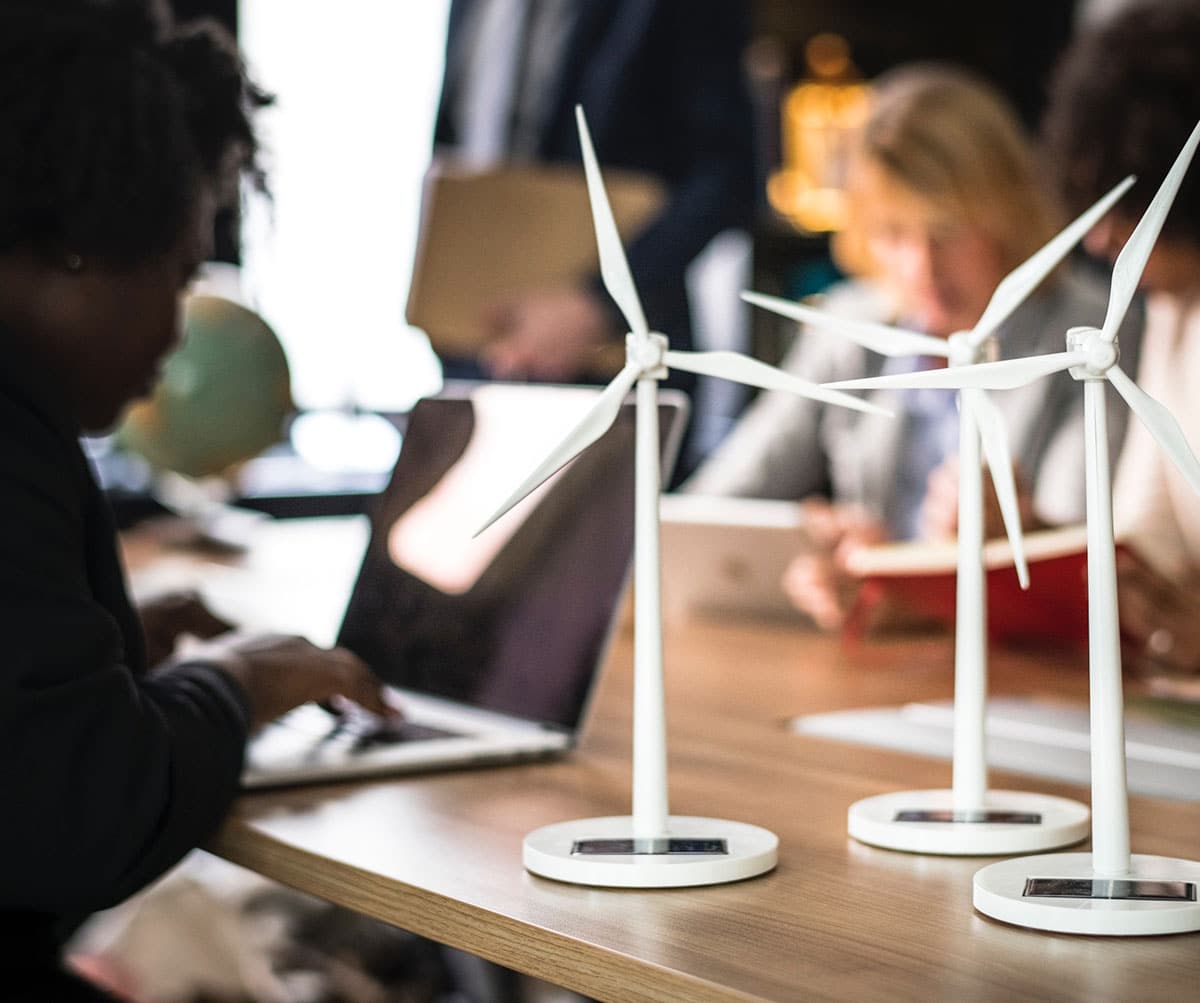Power purchase agreements (PPAs) – and virtual power purchase agreements (VPPAs) in particular – have become a popular and valuable way for companies to meet renewable energy and greenhouse gas (GHG) reduction goals. As many of our clients have experienced, there is a significant learning curve that comes with executing your first PPA–and one that should not be underestimated. 3Degrees has helped a number of organizations execute their first PPA or VPPA and have found that many of them are surprised by or unaware of certain key components for success.
Four important keys to success are:
- Advisor selection
- Defining the value of a PPA to your organization
- Stakeholder education and engagement
- Understanding that price and value are not the same
This article provides advice on how to successfully address each of these common stumbling blocks. If you are looking to execute your first deal, understanding and carefully thinking through these areas ahead of time will help ensure you have a smooth PPA procurement and implementation process.
1. Advisor selection: be skeptical of deals that sound too good
Some advisors pitch VPPAs as money makers with no upfront costs for your company. These claims should be viewed with skepticism and examined closely. We recommend the following considerations when you are evaluating and selecting an advisor:
- Know how your advisor is getting paid. Some advisors are making windfall profits based on a success fee pricing model. With this model, the advisor receives payment from the project developer upon contract execution and the fee is based on the long-term project revenue ($/MWh) or the size of the selected project ($/MW). The buyer benefits by avoiding upfront costs but this method is more costly over the long term. As important, it can also create a misalignment of incentives–the advisor gets paid more with a longer term and/or a larger sized deal. See our article on VPPA transaction fees for more details on how to make an informed pick for your advisor.
- Be cautious of easy money. VPPAs are sometimes advertised as positive cash flow for buyers–meaning that buyers will actually make money by entering into the contract. If a VPPA truly provided easy money, then we would expect to see project developers or investment bankers (who always follow the money) building projects on spec to reap the rewards. Ensure you understand the underlying modeling assumptions that result in a VPPA with positive net present value.
- Don’t bank on increasing wholesale power prices. Natural gas prices, which are highly correlated to wholesale power prices, are at historic lows due to the shale gas boom. We see no sign of a slowdown in US natural gas production [Source: EIA Annual Energy Outlook 2018], so be wary of price forecasts that show significant increases in wholesale power prices over time (and therefore increase the potential value of a VPPA for a buyer).
2. Defining the value: creating a PPA “mission statement”
When the sponsor of the PPA or VPPA initiative sits within the sustainability team, the “why” behind procuring renewable energy is often so obvious to them, it goes unsaid. Consequently, they may be surprised when they face resistance from others in the organization. For example, a facility manager might be more focused on keeping the electricity bill low. Or an energy buyer might view renewable energy as an unnecessary and frivolous use of company resources. Or maybe the company attorney resists dedicating time to learning a new contract structure.
Stakeholder engagement (more below) is a key part of working with these naysayers. But before launching stakeholder engagement activities, it is important to define why the company is heading down this path. Your PPA initiative needs a mission statement.
The mission (or purpose) of your PPA initiative provides the foundation for all internal and external discussions. For example, your company’s values may align with procuring renewable energy. There might be public goals that need to be met. Or you may be facing shareholder, customer or competitive pressure to act on climate change. Understanding and being able to explain why a PPA is well-suited to meet your needs provides the proper context for internal discussions.
In addition, a clearly defined purpose provides guiding principles for assessing the many trade-offs that come with the PPA selection process. Some common VPPA trade-offs include:
- A project located in the same state as your corporate headquarters versus a project in a less expensive part of the country
- The desire for additionality versus preference a shorter contract commitment
- Executing a single transaction to meet goals versus multiple contracts to diversify risk
When a company has a clearly articulated mission for their PPA initiative, the answers to these questions become simpler and the best-fit PPA can readily emerge.
3. Stakeholder engagement: ignore at your peril
PPAs are complex contracts that require significant buy-in from across the organization. You will be introducing people to a lot of new concepts – concepts that are typically not part of the organization’s core business and outside people’s comfort zone. This leaves many stakeholders feeling uncertain and afraid to ask a “stupid” question. As a result, we’ve seen stakeholders avoid asking questions and internal deal champions that assume this lack of questions equals support for moving forward with a PPA. Unfortunately, the silence is often indicative of continued confusion and can create last minute project roadblocks.
So how do you get meaningful engagement with your stakeholders (and avoid unpleasant surprises later)?
- Stakeholder mapping: Think carefully about all of the different departments that may be impacted by a PPA and/or may have decision-making authority. It can be useful to look at other major initiatives that required multi-departmental buy-in to ensure that a complete list is created.
- Outreach: After the stakeholder map is complete, find the decision maker in each department. Build the relationship by telling them the renewable energy story, the PPA “mission statement” and the importance of their department’s role in the overall decision-making process.
- Education: Renewable energy, wholesale power markets and the mechanics of the “contract-for-differences” are key topics for the stakeholder group to understand when pursuing a VPPA. These concepts are usually new to stakeholders and have very little to do with their day-to-day responsibilities. People do not need to be experts — that’s what advisors are for — but they do need to understand the value drivers and risks. Be very intentional about setting the tone for stakeholder meetings. Simple statements such as “we are all here to learn” and “please ask questions” can create an environment where real questions will emerge.
- Follow-up: Individual follow-up goes a long way. This can be a simple email or a small group discussion on the specific topics that correspond to an individual and their role. This kind of targeted follow-up can create a comfortable environment for asking detailed questions, thus giving stakeholders the ability to confidently support your initiative.
- Repeat: True stakeholder engagement requires building trust over the term of the PPA initiative. Stakeholders need to be given regular progress updates and provided with opportunities to ask further questions.
If you are working with an advisor, they should be able to provide some tools and resources to guide the stakeholder engagement process.
4. Evaluating offers: VPPA value is not just about price
We all like a good deal. There’s a reason why retailers run special promotions for items at $9.99 instead of $10 – we like paying the perceived “lower” price. So while our natural instinct is to select the lowest price, for VPPAs, the lowest price offer is often not the best value for the buyer.
Instead, consider: What is the long-term value of the VPPA for our company? And how can I ensure I’m making an apples-to-apples comparison between projects?
For example, how do you compare:
- A wind project against a solar project given that these technologies have different generation profiles?
- Projects with different start dates or different contract lengths?
- Projects in different states or regions?
There are no simple answers, but a comprehensive quantitative analysis can provide insights that will allow a buyer to make a clear-eyed selection. Some of the most common approaches to the quantitative analysis include:
- Using multiple forecasts of the floating wholesale power price and comparing these to the fixed contract price, resulting in a range of expected implied REC values
- Stress-testing wholesale power price forecasts to understand potential value under a range of market conditions
- Using a historical look-back to see how the contract would have performed if it had been executed three-to-five years ago
Executing a PPA is an incredibly powerful tool for meeting your corporate sustainability, renewable energy and GHG reduction goals. We encourage you to think critically about the early steps you can take to set yourself up for the successful execution of a well-understood and risk-mitigated contract.
If you are looking for help with an upcoming PPA or VPPA transaction, learn more about our renewable energy procurement services or contact us.






